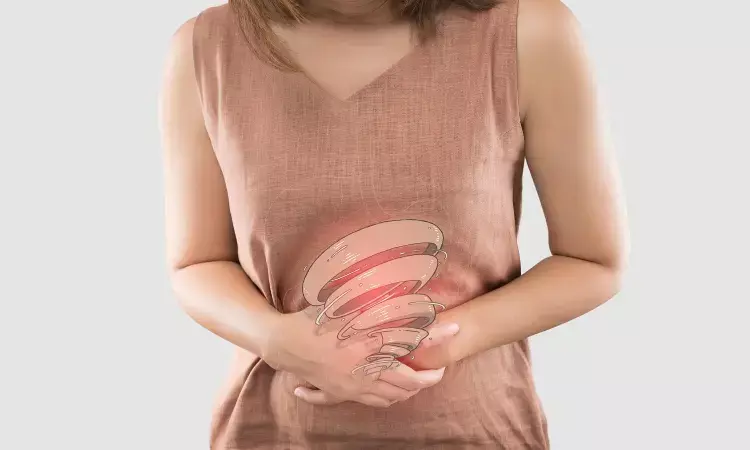- Home
- Medical news & Guidelines
- Anesthesiology
- Cardiology and CTVS
- Critical Care
- Dentistry
- Dermatology
- Diabetes and Endocrinology
- ENT
- Gastroenterology
- Medicine
- Nephrology
- Neurology
- Obstretics-Gynaecology
- Oncology
- Ophthalmology
- Orthopaedics
- Pediatrics-Neonatology
- Psychiatry
- Pulmonology
- Radiology
- Surgery
- Urology
- Laboratory Medicine
- Diet
- Nursing
- Paramedical
- Physiotherapy
- Health news
- Fact Check
- Bone Health Fact Check
- Brain Health Fact Check
- Cancer Related Fact Check
- Child Care Fact Check
- Dental and oral health fact check
- Diabetes and metabolic health fact check
- Diet and Nutrition Fact Check
- Eye and ENT Care Fact Check
- Fitness fact check
- Gut health fact check
- Heart health fact check
- Kidney health fact check
- Medical education fact check
- Men's health fact check
- Respiratory fact check
- Skin and hair care fact check
- Vaccine and Immunization fact check
- Women's health fact check
- AYUSH
- State News
- Andaman and Nicobar Islands
- Andhra Pradesh
- Arunachal Pradesh
- Assam
- Bihar
- Chandigarh
- Chattisgarh
- Dadra and Nagar Haveli
- Daman and Diu
- Delhi
- Goa
- Gujarat
- Haryana
- Himachal Pradesh
- Jammu & Kashmir
- Jharkhand
- Karnataka
- Kerala
- Ladakh
- Lakshadweep
- Madhya Pradesh
- Maharashtra
- Manipur
- Meghalaya
- Mizoram
- Nagaland
- Odisha
- Puducherry
- Punjab
- Rajasthan
- Sikkim
- Tamil Nadu
- Telangana
- Tripura
- Uttar Pradesh
- Uttrakhand
- West Bengal
- Medical Education
- Industry
Inpatient IBD Pain Management Protocol Reduces Opioid Use: Study

In a recent trial, opioid usage was reduced among hospitalised patients with inflammatory bowel disease who were treated with a new pain management practice that included scheduled nonopioid drugs modified depending on pain intensity.
The strategy, created by experts at Cedars-Sinai in Los Angeles, was also shown to be more successful at reducing pain than usual therapy that involves opioids, according to a recently published study.
Opioids are often used to alleviate pain, which is a primary symptom for the majority of hospitalised IBD patients. However, there are serious hazards associated with these medications, including as infection, readmission to the hospital, overdose, and accidental diversion.
Patients with IBD are more likely than those with any other chronic GI illness to be prescribed opioids, despite the associated dangers. Even though many IBD patients in hospitals will need opioid medication for pain management, nonopioid analgesic alternatives must be investigated in order to reduce related dangers and enhance patients' long-term pain management.
The Proactive Analgesic Inpatient Narcotic-Sparing (P.A.I.N.-Sparing) protocol was created by Dr. Berry and his co-investigators after a study of the literature on pain management and investigation into analgesic regimens used in other illnesses comparable to IBD. The strategy depends on regularly scheduled nonopioid painkillers that are adjusted based on the intensity of a patient's discomfort (Figure). Patients may, however, ask to be prescribed opioids if their breakthrough pain is out of control.
Mild Pain (VRS 1-3)
• PO Acetaminophen 1,000 mg q8h
Moderate Pain (VRS 4-6)
• PO Acetaminophen 1,000 mg q8h
• PO Gabapentin 400 mg QHS (hold for sedation)
• PO Lorazepam 1 mg q8h PRN (hold for sedation)
• PO Celecoxib 200 mg on day 1, then 100 mg BID (4 days total – automatic end date)
• Sequential compression device + SQ heparin (auto order)
Severe Pain (VRS 7 to >10)
• PO Acetaminophen 1,000 mg q8h
• PO Gabapentin 600 mg QHS (hold for sedation)
• PO Lorazepam 2 mg q8h PRN (hold for sedation)
• PO Celecoxib 400 mg on day 1, then 100 mg BID (4 days total – automatic end date)
• Sequential compression device + SQ heparin (auto order)
Breakthrough Pain
• PO Tramadol 50 mg q6h PRN
• IVPB Morphine 2 mg q4h PRN (opiate-naive)
• IVPB Morphine 4 mg q4h PRN (opiate-tolerant – may adjust)
• They randomly assigned 33 IBD patients to receive either the P.A.I.N. protocol or standard treatment with opioids in order to evaluate the effectiveness of the P.A.I.N.-Sparing procedure.
The intervention group used significantly less opioids (average daily morphine milligramme equivalents, 11.8±15.3 vs. 30.9±42.2; P=0.027) and reported significantly lower pain scores (3.02±0.90 vs. 4.29±0.81; P=0.059) than the other group. However, both groups reported significantly reduced pain from admission to discharge.
Patients who followed the regimen also had a substantially greater step count on day 4 in the hospital (2,330±1,709 vs. 1,050±1,214; P=0.014) in terms of mobility.
They provide evidence that "a proactive pain control bundle for hospitalised patients with IBD can reduce the use of opioids, which are associated with so much potential for harm, while also improving pain and leading to overall better outcomes, including physical activity in the hospital."
"Offers a useful guide to proactively manage pain for patients hospitalised with IBD," said the report.
From hospital admission to release, the P.A.I.N.-sparing strategy used in this research shows a practical and systematic way to assess, evaluate, and manage pain management.
It's important to note that the intervention protocol only included pharmacologic interventions. However, the researchers also suggested that nonpharmacologic strategies that are presently being researched, like virtual reality and biofeedback, could be included into a proactive strategy to reduce pain and discomfort in IBD patients who are hospitalised.
Reference –
Berry, S.K., Takakura, W., Patel, D. et al. A randomized controlled trial of a proactive analgesic protocol demonstrates reduced opioid use among hospitalized adults with inflammatory bowel disease. Sci Rep 13, 22396 (2023). https://doi.org/10.1038/s41598-023-48126-0
L
MBBS, MD (Anaesthesiology), FNB (Cardiac Anaesthesiology)
Dr Monish Raut is a practicing Cardiac Anesthesiologist. He completed his MBBS at Government Medical College, Nagpur, and pursued his MD in Anesthesiology at BJ Medical College, Pune. Further specializing in Cardiac Anesthesiology, Dr Raut earned his FNB in Cardiac Anesthesiology from Sir Ganga Ram Hospital, Delhi.


